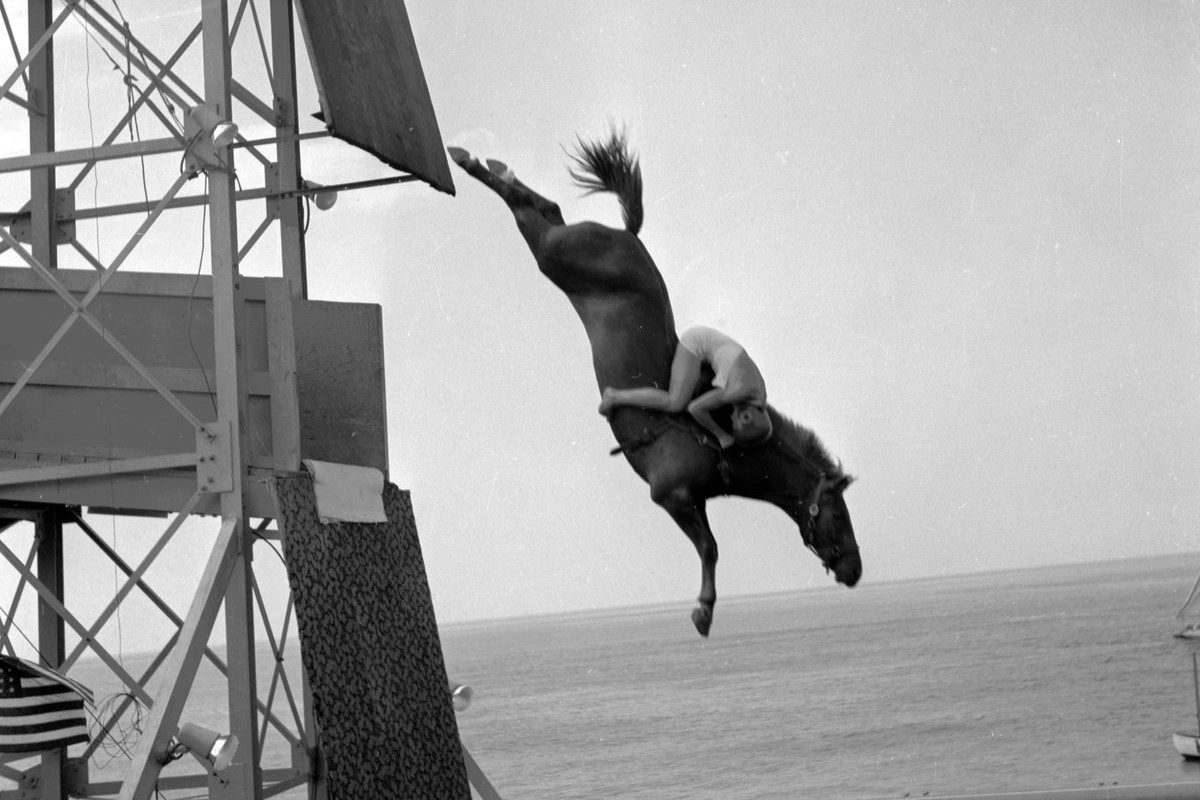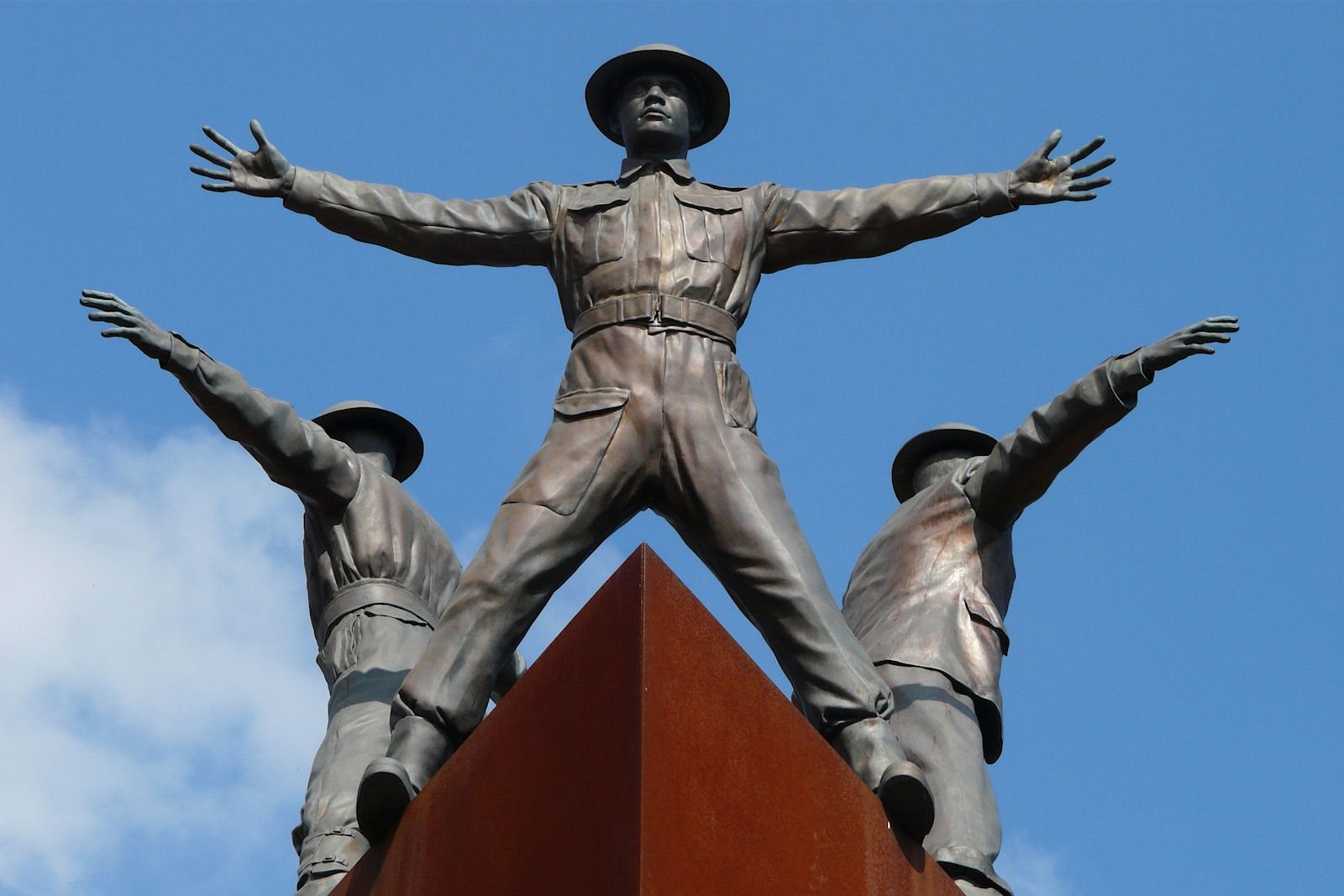
Horse diving might sound like a wild stunt from a circus, but it was once a popular attraction in the early 20th century. Imagine a horse and rider plunging from a 40-foot platform into a pool below. This daring act drew crowds and sparked debates about animal welfare. Horse diving began in the 1880s and continued until the 1970s, captivating audiences with its mix of thrill and controversy. While some saw it as a testament to the bond between human and horse, others criticized it for the potential harm to the animals. Curious about this unique piece of history? Let's dive into 35 fascinating facts about horse diving!
Key Takeaways:
- Horse diving, a daring sport from the late 19th century, captivated audiences with its thrilling stunts and controversial nature. Despite its end, its legacy lives on through historical accounts and films.
- The fascinating history of horse diving, featuring famous divers and their horses, has left a lasting impact on popular culture. While the sport is no longer practiced, it continues to spark curiosity and debate.
The Origins of Horse Diving
Horse diving, a unique and controversial sport, has a fascinating history. Let's explore some intriguing facts about its beginnings and evolution.
- Horse diving began in the late 19th century as a form of entertainment at amusement parks and fairs.
- The sport was popularized by William "Doc" Carver, a former Wild West showman, who claimed to have invented it after his horse accidentally fell off a bridge into a river.
- Carver's first horse diving show took place in 1881 in Nebraska, drawing large crowds and sparking interest in the unusual spectacle.
- The sport gained significant popularity in the early 20th century, with shows being held across the United States and even in Europe.
- Horse diving was often featured as a main attraction at Atlantic City's Steel Pier, where it became a staple for decades.
The Mechanics of Horse Diving
Understanding how horse diving works can shed light on why it captivated audiences for so long. Here are some key details about the mechanics behind the sport.
- In a typical horse diving act, a horse and rider would ascend a tall platform, often reaching heights of 40 to 60 feet.
- The horse would then leap off the platform into a pool of water below, usually around 10 feet deep.
- Riders were trained to stay balanced and calm during the dive to ensure both their safety and the horse's.
- Horses were selected for their calm temperament and ability to handle the stress of diving.
- Training for horse diving involved gradually increasing the height of the jumps to acclimate the horse to the experience.
Controversies and Concerns
Despite its popularity, horse diving faced significant criticism and controversy over the years. Here are some facts about the concerns surrounding the sport.
- Animal rights activists have long argued that horse diving is cruel and inhumane, citing the potential for injury and stress to the animals.
- In the 1970s, growing awareness of animal welfare issues led to increased scrutiny and protests against horse diving shows.
- The American Society for the Prevention of Cruelty to Animals (ASPCA) was one of the leading organizations campaigning against horse diving.
- Due to mounting pressure from activists and changing public attitudes, many horse diving shows were shut down by the late 20th century.
- The last known horse diving act at Atlantic City's Steel Pier took place in 1978, marking the end of an era for the sport.
Famous Horse Divers
Several individuals and horses became famous for their involvement in horse diving. Here are some notable figures from the sport's history.
- Sonora Webster Carver, one of the most famous horse divers, performed for over a decade despite losing her sight in a diving accident.
- Sonora's story was later adapted into the 1991 Disney film "Wild Hearts Can't Be Broken," bringing renewed attention to the sport.
- Red Lips, a horse known for its distinctive red muzzle, was one of the most beloved and well-known diving horses.
- Al Carver, Sonora's husband, was also a prominent horse diver and trainer, contributing to the sport's development.
- Doc Carver's daughter, Lorena Carver, followed in her father's footsteps and became a skilled horse diver herself.
Modern Perspectives on Horse Diving
Today, horse diving is largely a thing of the past, but it still sparks curiosity and debate. Here are some modern perspectives on the sport.
- Some historians view horse diving as a reflection of the entertainment culture of its time, highlighting the public's fascination with daring stunts.
- Animal welfare organizations continue to use horse diving as an example in their campaigns against animal cruelty in entertainment.
- There are no active horse diving shows today, as the practice is widely considered unethical and unsafe for the animals involved.
- The legacy of horse diving lives on through historical accounts, photographs, and films that document the sport's history.
- Some former horse divers and their families have shared their stories, providing insight into the challenges and thrills of the sport.
Interesting Tidbits
Beyond the main facts, there are some lesser-known details about horse diving that add to its mystique. Here are a few interesting tidbits.
- Horse diving platforms were often elaborately decorated to enhance the visual appeal of the shows.
- Some horse diving acts included multiple horses diving simultaneously, adding to the spectacle.
- The pools used for horse diving were sometimes heated to make the water more comfortable for the horses.
- In addition to horses, some shows featured other animals, such as dogs, performing similar diving stunts.
- Horse diving acts were sometimes combined with other circus-style performances, creating a varied and exciting show for audiences.
The Cultural Impact of Horse Diving
Horse diving left a lasting impact on popular culture, influencing various forms of media and entertainment. Here are some ways the sport has been remembered.
- The sport has been referenced in books, movies, and television shows, often as a symbol of daring and adventure.
- Historical photographs and posters from horse diving shows are now considered valuable collectibles.
- Some museums and historical societies have preserved artifacts and memorabilia from horse diving's heyday.
- The story of Sonora Webster Carver continues to inspire people, highlighting themes of resilience and determination.
- Despite its controversial nature, horse diving remains a fascinating chapter in the history of entertainment and animal performance.
The Final Splash
Horse diving, a unique and controversial sport, has a rich history filled with daring feats and passionate debates. From its origins in the early 1900s to its decline due to animal welfare concerns, this spectacle has left an indelible mark on entertainment history. The sport showcased the incredible bond between horses and their riders, highlighting both bravery and trust. However, the ethical implications can't be ignored, leading to its eventual ban in many places.
Understanding horse diving's past helps us appreciate the progress made in animal rights and entertainment standards. While the sport may no longer be prevalent, its legacy continues to spark curiosity and discussion. Whether viewed as a thrilling stunt or a troubling practice, horse diving remains a fascinating chapter in the annals of history.
Frequently Asked Questions
Was this page helpful?
Our commitment to delivering trustworthy and engaging content is at the heart of what we do. Each fact on our site is contributed by real users like you, bringing a wealth of diverse insights and information. To ensure the highest standards of accuracy and reliability, our dedicated editors meticulously review each submission. This process guarantees that the facts we share are not only fascinating but also credible. Trust in our commitment to quality and authenticity as you explore and learn with us.


